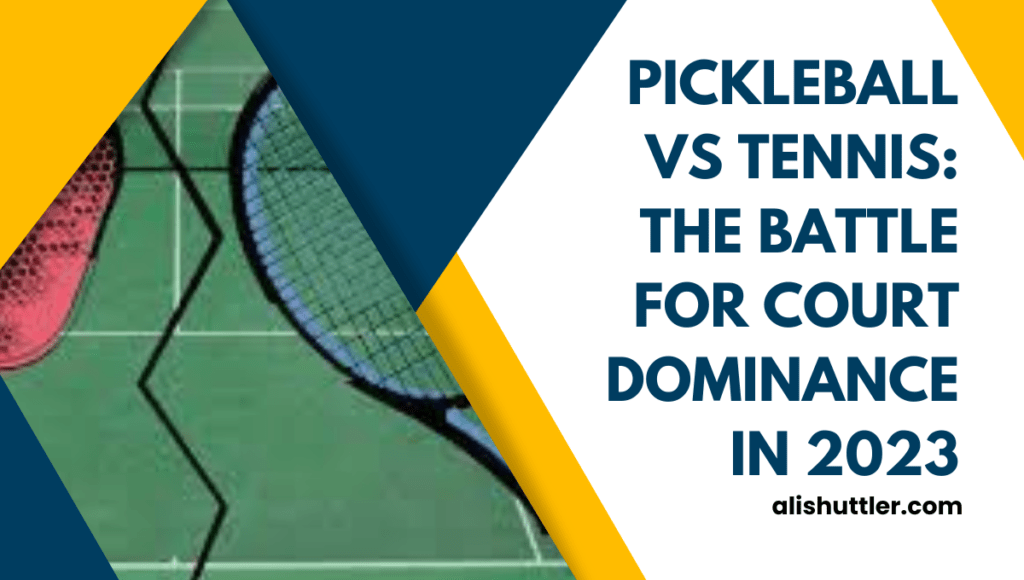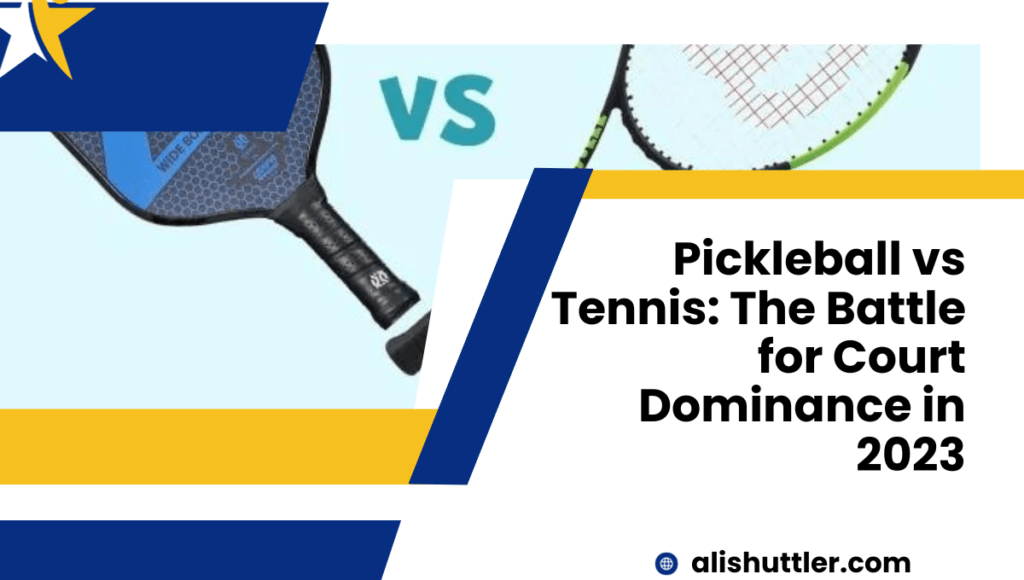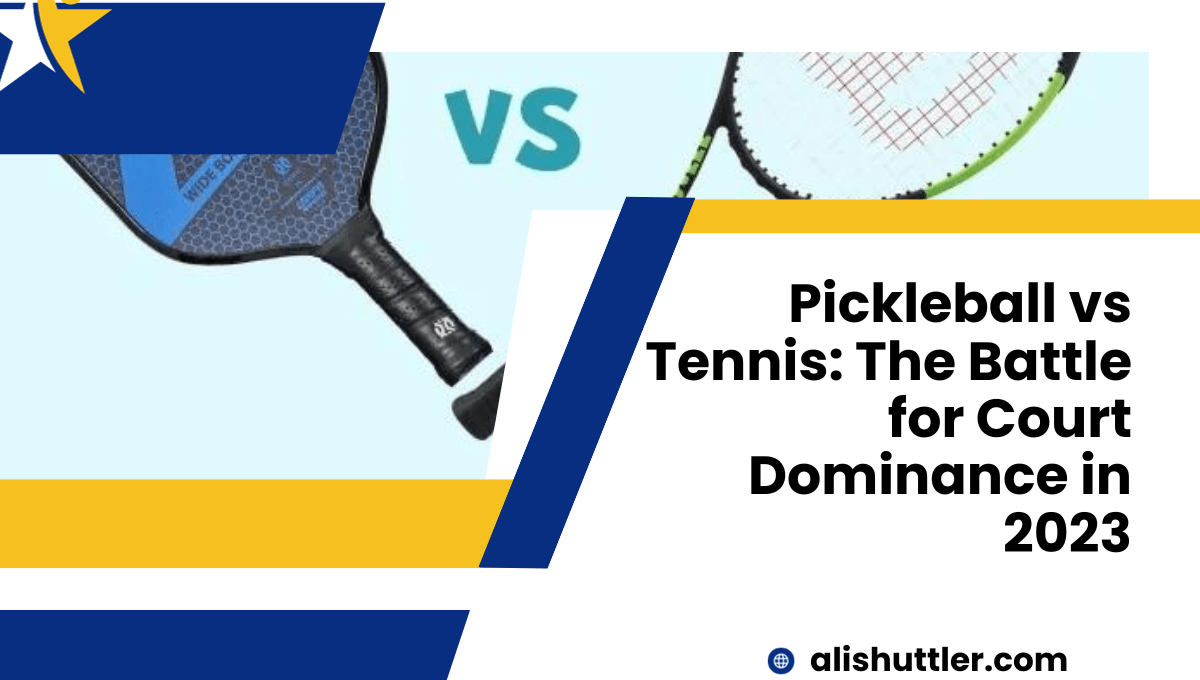Pickleball, the fastest-growing sport in the United States, has taken the tennis world by storm. Originating in the 1960s, this game has experienced an unprecedented surge in popularity across all age groups and demographics. Unlike traditional tennis, pickleball offers a unique blend of accessibility, simplicity, and social interaction that has captivated players nationwide. Whether you’re a seasoned athlete or a beginner looking for a fun and engaging activity, pickleball provides an exciting contrast to conventional sports. Join the revolution and discover why this dynamic game is dominating pickleball vs tennis courts everywhere.
Table of Contents
Impact on Tennis Courts: Conversion and Transformation
The increasing demand for pickleball has led to the conversion and modification of tennis courts across the nation. Tennis facilities are adapting to this new trend by offering dedicated pickleball courts alongside traditional tennis courts.
With limited court space available, parks departments and public spaces have recognized the need to accommodate both pickleball and tennis courts. This shift reflects the changing preferences of players who are gravitating towards pickleball’s fast-paced and accessible gameplay.
Here’s how this transformation is impacting tennis courts:
Conversion of Tennis Courts
Tennis courts that were once solely reserved for tennis enthusiasts are now being converted into dual-use facilities. By adding pickleball lines and nets, these courts can cater to players of both sports. This conversion maximizes the use of existing infrastructure while meeting the growing demand for pickleball.
Dedicated Pickleball Courts
To further meet the needs of pickleball players, many tennis facilities now offer dedicated pickleball courts. These purpose-built courts provide an optimal playing experience for pickleball enthusiasts, with proper dimensions and specialized surfaces designed specifically for this sport.
Increased Accessibility
The conversion and addition of dedicated pickleball courts make the sport more accessible to a wider range of players. It allows individuals who may not have previously considered or had access to tennis facilities to participate in a fun and engaging activity.
Multi-Sport Facilities
Some parks departments are taking it a step further by creating multi-sport facilities that include both tennis and pickleball courts in one location. This approach ensures that players have options and can choose between the two sports based on their preferences or skill levels.
The conversion and transformation of tennis courts demonstrate how sports evolve to meet changing demands. As more people discover the excitement of playing pickleball, we can expect to see further modifications made to accommodate this growing trend.

Pickleball vs Tennis: Key Differences and Comparisons
Pickleball, the new sport that is taking over tennis courts, offers a unique and exciting alternative to traditional tennis. With its smaller court size and distinct rules, pickleball sets itself apart from its older sibling.
In pickleball, players use paddles instead of racquets and a plastic ball with holes. This combination creates a different playing experience compared to tennis. The smaller court size in pickleball allows for quicker rallies and more strategic gameplay compared to tennis, with the difference in net height being a key factor.
While both pickleball and tennis share similarities in serving techniques, the growth of pickleball vs tennis ball has been significant. However, their gameplay styles differ significantly. In pickleball, players engage in what is known as the “pickleball war,” where they must stay at the baseline until the ball clears the non-volley zone (a seven-foot area near the net). This rule adds an element of strategy as players try to position themselves for optimal shots.
On the other hand, tennis focuses on powerful groundstrokes and serves, with players covering a larger court area. The game requires more endurance due to longer rallies and greater court coverage.
Here are some key differences between pickleball and tennis:
Pickleball:
- Smaller court size
- Use of paddles instead of racquets
- Plastic ball with holes
Tennis:
- Larger court size
- Use of racquets
- Traditional tennis ball
Both pickleball and tennis have their appeal and offer unique challenges for players. Whether it’s the difference in the size and weight of the pickleball vs tennis ball, or the specific design and features of pickleball vs tennis shoes, each sport requires its own set of skills and equipment. Whether you prefer the fast-paced action of pickleball or the classic style of tennis, there’s something for everyone on the courts.
So if you’re looking for a new sport to try out or want to switch up your routine, consider giving pickleball a shot! You might just find yourself hooked on this exciting game that’s taking over tennis courts everywhere.
Exploring the Popularity of Pickleball in the United States
Pickleball has been gaining immense popularity across the United States, and it’s not hard to see why. This new sport is taking over tennis courts and capturing the attention of players of all ages. Let’s delve into what makes pickleball so appealing and why it has become such a hit.
Appeal Among Older Adults
One of the main reasons for pickleball’s surge in popularity is its appeal among older adults. As we age, many of us look for low-impact exercise options that still allow us to stay active and have fun. Pickleball fits the bill perfectly, offering a less strenuous alternative to traditional sports like tennis. The growth of pickleball vs tennis is evident in the smaller court size, slower ball speed, and lighter paddles. This makes it easier on joints while still providing an excellent workout. Additionally, the pickleball vs tennis net height is another factor to consider.
Inclusive Nature
Another factor contributing to pickleball’s popularity is its inclusive nature. Unlike some sports that can be intimidating or exclusive, pickleball welcomes players from diverse backgrounds and skill levels. Whether you’re a seasoned athlete or a beginner looking to try something new, you’ll find a place on the pickleball court. This inclusivity fosters a sense of community among players and encourages people from all walks of life to join in on the fun.
Embraced by Communities
Local communities and retirement villages across the country have embraced pickleball as a recreational activity for their residents. They recognize its numerous benefits, including physical fitness, social interaction, and mental stimulation. Many communities now offer dedicated pickleball courts alongside traditional tennis facilities, catering specifically to this growing demand.
The Accessibility and Inclusivity of Pickleball
Pickleball, the sport that is taking over tennis courts, offers a unique appeal with its accessibility and inclusivity. Unlike many other sports, pickleball has lower barriers to entry, making it accessible for beginners. With its slower pace compared to tennis or other fast-paced sports, pickleball allows players of varying fitness levels or physical limitations to participate comfortably.
One of the reasons why pickleball is so accessible is the equipment used. Picklers play with paddles and a plastic ball with perforations, known as a “pickleball.” The paddle is smaller than a tennis racket, which makes it easier to handle for beginners. This means that even if you’ve never played before, you can quickly get the hang of it without feeling overwhelmed.
Communities are recognizing the growing popularity of pickleball and investing in dedicated public pickleball courts. These courts promote inclusivity within recreational offerings by providing spaces specifically designed for pickleball enthusiasts. Township officials have taken note of the demand for these courts and are actively working towards meeting this need.
The sound of a paddle hitting a pickleball creates an addictive rhythm on the court. It’s not just about skill levels; anyone can enjoy playing pickleball regardless of age or experience. Whether you’re new to the game or an experienced player, there’s always room for improvement and growth.
Professional Associations for Pickleball Players
Professional pickleball players have taken the sport by storm, showcasing its growth and potential for a professional circuit. To support these athletes and further develop the sport, organizations like the USA Pickleball Association (USAPA) have emerged as key players in the pickleball community.
The USAPA serves as a central hub for competitive pickleball players, providing valuable resources, organizing tournaments, and establishing rankings. Through their efforts, they contribute to the recognition of pickleball as a legitimate competitive sport.
Here’s how professional associations like USAPA are making a difference in the world of pickleball:
Resources and Support
- The USAPA offers a wealth of resources to help players improve their skills and stay up-to-date with the latest developments in the sport.
- They provide access to instructional videos, rulebooks, coaching programs, and equipment recommendations.
- These resources are invaluable for both aspiring professionals and recreational players looking to enhance their game.
Tournaments and Competitions
- Professional associations organize tournaments at various levels, from local events to national championships.
- These tournaments offer opportunities for players to showcase their skills on a competitive stage while also fostering camaraderie among participants.
- By hosting high-profile competitions, professional associations attract attention to the sport and create excitement around it.
Rankings and Recognition
- Professional associations establish ranking systems that track player performance across different categories such as age groups and skill levels.
- These rankings provide a measure of achievement for players striving to excel in their respective divisions.
- They help identify top talent within the sport and contribute to building recognition for exceptional athletes.
As professional pickleball continues to gain momentum, these associations play an integral role in nurturing its growth. Through their resources, tournaments, and rankings systems, they provide support to aspiring professionals while elevating pickleball’s status as a legitimate competitive endeavor.

Potential Threat to Tennis: Is Pickleball Taking Over?
Pickleball’s popularity is skyrocketing, but it’s important to note that it isn’t necessarily replacing tennis. Instead, it is complementing the sport and offering players a new and exciting option. Many tennis facilities are recognizing this trend and adapting their offerings by incorporating pickleball into their courts.
The coexistence of pickleball and tennis courts allows players to enjoy diverse options when they step onto the court. Additionally, having the right pickleball and tennis shoes is essential for optimal performance in both sports. It encourages more people to utilize tennis courts, as those who may be interested in trying pickleball now have the opportunity to do so alongside traditional tennis players.
This integration of pickleball into tennis facilities has several benefits:
Complementary Sports
Pickleball provides a different playing experience compared to tennis. With its smaller court size, lighter paddles, and unique rules, pickleball offers a fresh challenge for players seeking something new. By having both sports available at one facility, players can switch between them based on their preferences or even try out both during a single visit.
Increased Participation
The addition of pickleball attracts new participants who may not have been interested in traditional tennis before. Its accessibility and ease of learning make it an appealing option for individuals of all ages and skill levels. This influx of new players can breathe new life into tennis facilities, creating a vibrant community of athletes on the courts.
Utilizing Existing Infrastructure
By incorporating pickleball into existing tennis facilities, there is no need for extensive construction or additional space allocation. This cost-effective approach allows for maximum utilization of resources while still catering to the growing demand for both sports.
Embracing the Evolution of Sports on Tennis Courts
As we’ve explored in the sections above, pickleball is a sport that is rapidly gaining popularity and making its mark on tennis courts across the country. With its unique blend of elements from tennis, badminton, and ping pong, pickleball offers a fresh and exciting experience for players of all ages and skill levels. The conversion and transformation of tennis courts to accommodate this new sport have opened up opportunities for more people to get involved and enjoy the game.
So why not embrace this evolution? Pickleball brings a sense of inclusivity, accessibility, and community that can breathe new life into our beloved tennis courts. Just as technology evolves, so too do sports. It’s important to adapt and welcome these changes rather than resist them. By embracing pickleball alongside tennis, we can create vibrant spaces where both sports thrive side by side.
In conclusion, don’t be afraid to step onto the court with a paddle in hand and give pickleball a try. You might discover a whole new world of fun and excitement waiting for you. Whether you’re an avid tennis player looking for something different or someone who’s never picked up a racket before, pickleball has something for everyone. So go ahead, grab your friends or family members, head down to the local court, and join in on the action!
FAQs
Can I play pickleball if I’ve never played any racket sport before?
Absolutely! Pickleball is known for its ease of learning and accessibility for beginners. Even if you have no prior experience with any racket sport, you can quickly pick up the basics of pickleball and start enjoying the game.
Do I need special equipment to play pickleball?
While there are specific paddles designed for pickleball, they are relatively affordable compared to other racket sports equipment. You’ll need a pickleball ball (similar to a wiffle ball) and a net. Many tennis courts are now equipped with pickleball lines, making it easy to set up and play.
Is pickleball suitable for older adults?
Yes, pickleball is an excellent sport for older adults due to its lower-impact nature compared to sports like tennis. The smaller court size and slower pace make it easier on the joints while still providing a great workout and social experience.
Can I play pickleball indoors?
Absolutely! Pickleball can be played both indoors and outdoors. Many recreational centers, gyms, and community centers have indoor pickleball courts available for play year-round.
How many players are needed for a game of pickleball?
Pickleball can be played in singles (one player on each side) or doubles (two players on each side). Doubles are the most common format, but you can enjoy the game regardless of the number of players available.

